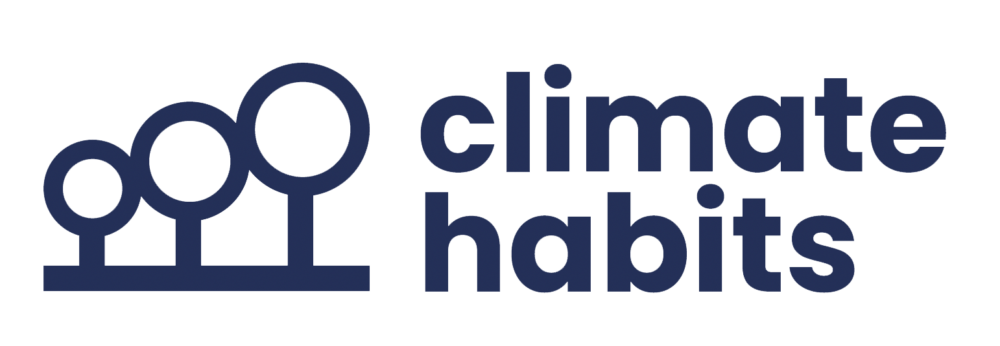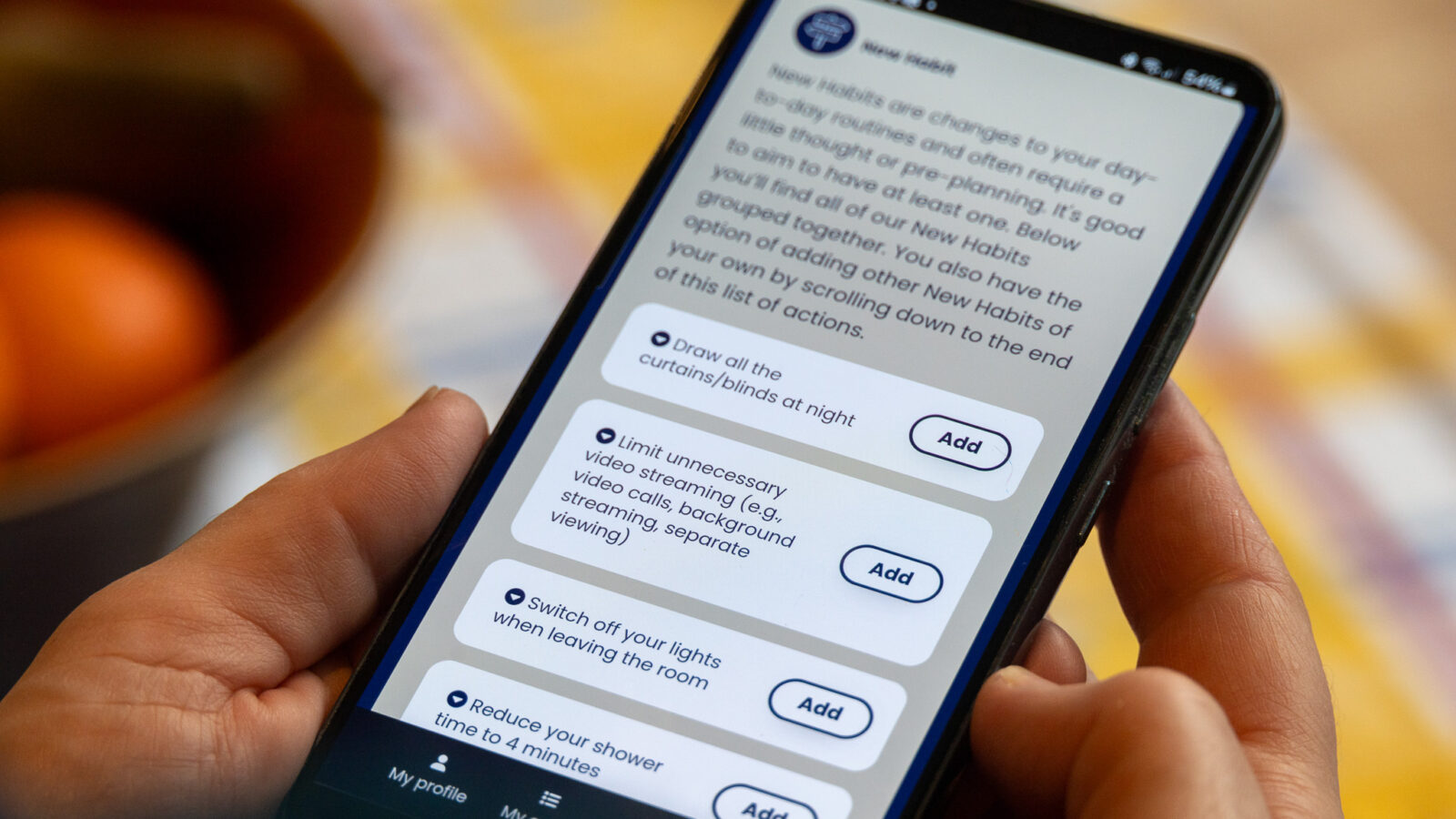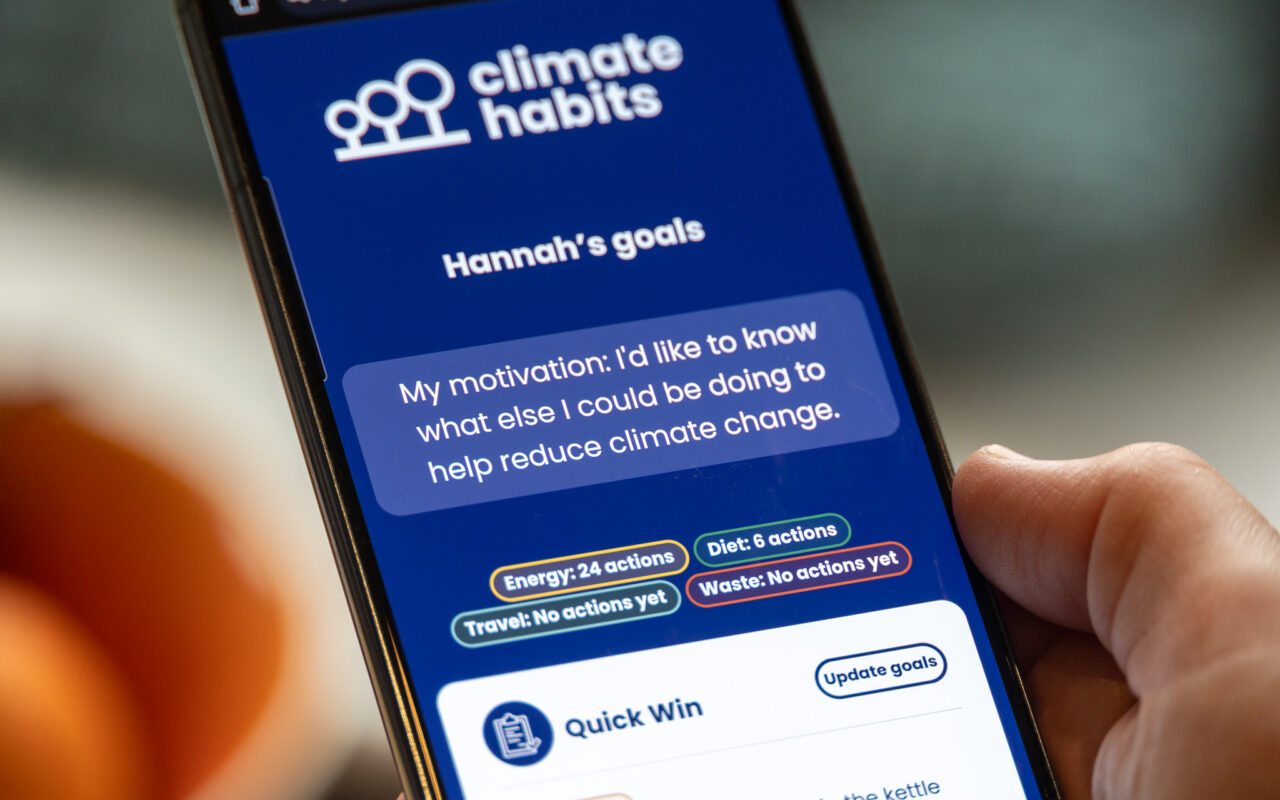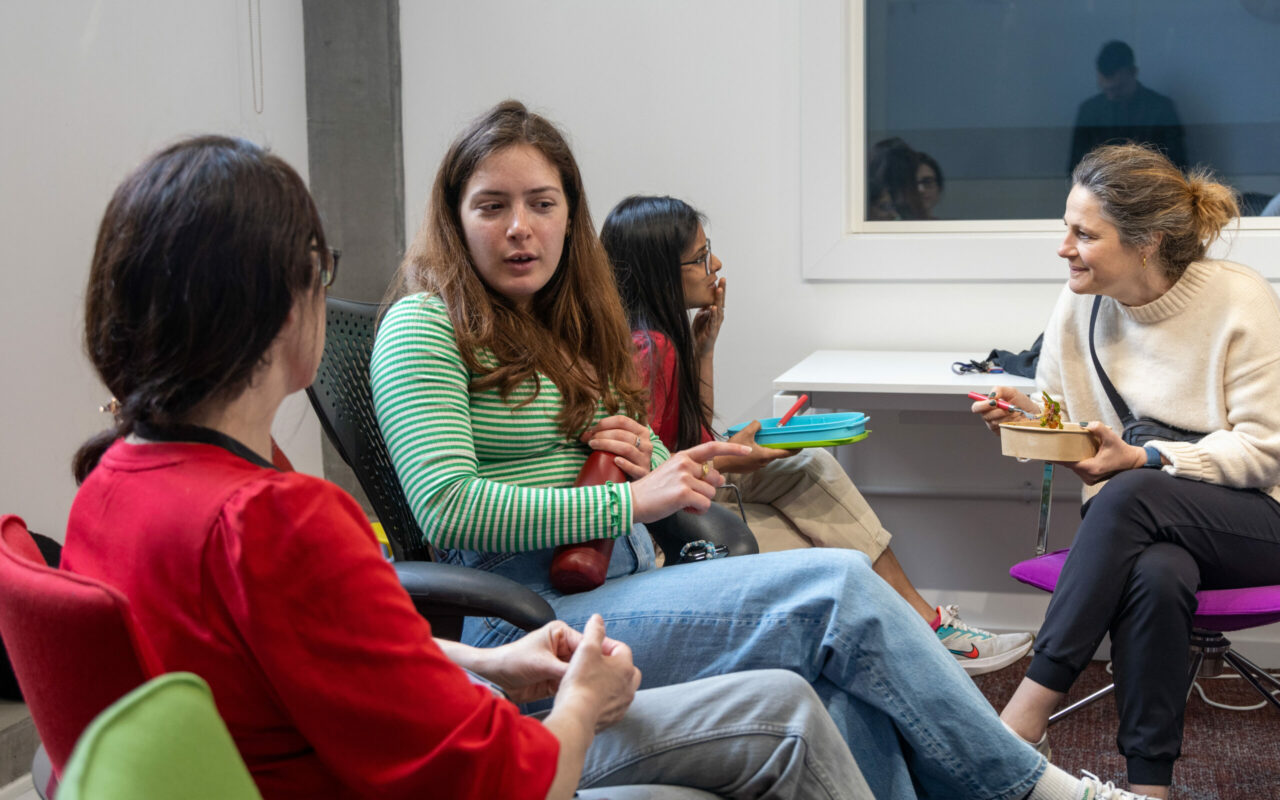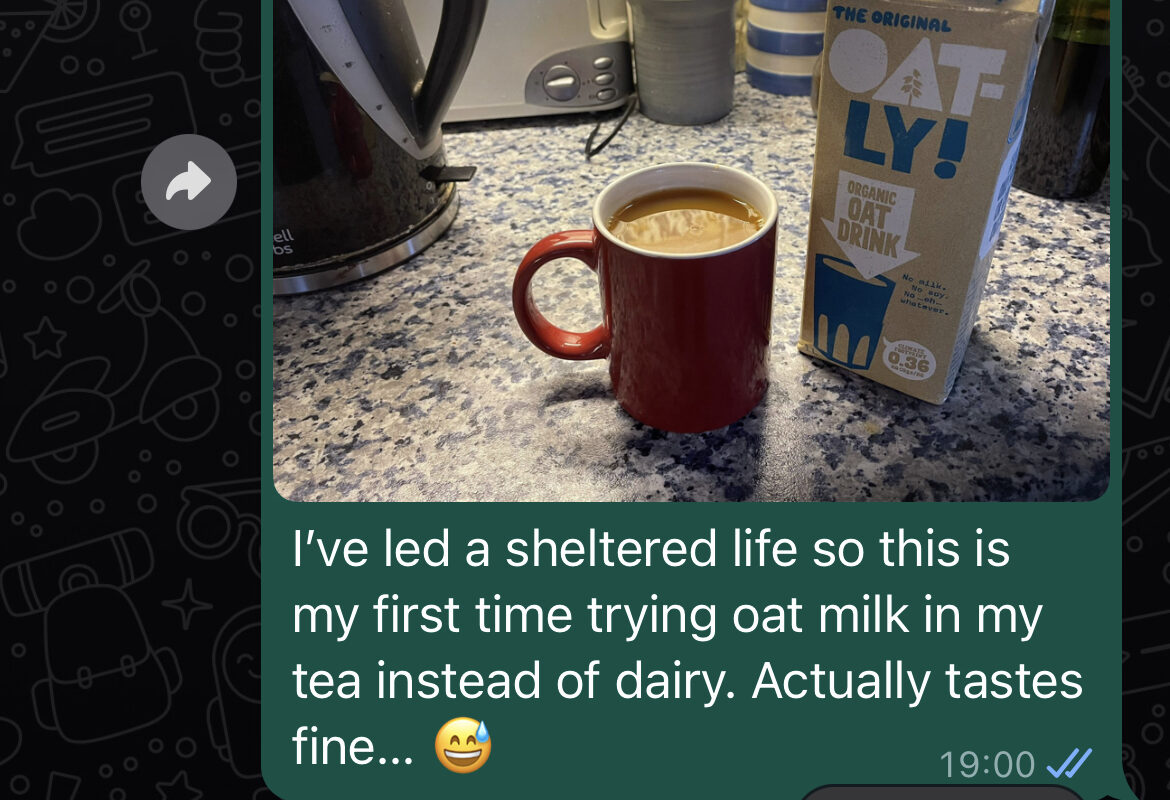I’ve realised I really like working on digital products where you get to watch your users in action.
Ten years back, I developed a social media simulator platform as a training tool, and stumbled into the world of crisis communications. Suddenly, my platform wasn’t just a way to practice your tweeting, but a component of high-stakes reputation management for large corporates and PR firms. What I loved most was seeing users genuinely horrified by a fictional media report or ‘influencer’ video on our closed-loop platform, within an intensive workshop. As a developer, it’s rare to get to see the whites of your users’ eyes – in a good way.
Building the Climate Habits app
I had a little flashback to that the other week when I saw my first group of users setting up their goals lists in a new product I’ve been working on: Climate Habits.
It’s a 3-week workplace programme which brings colleagues together to think about their personal climate impact. I say ‘think about’ but really it’s intensely practical: what makes it special is the blend of behavioural psychology, simple technology and a supportive group of people who celebrate and encourage you to turn your list of goals into day to day lifestyle changes. It’s where some of the other climate change apps I’ve tried fall short: they try to motivate you with points and statistics, which just doesn’t have the same impact.
The founder, Jude, had previously prototyped the programme with virtual workshop tools like Miro and PowerPoint before I joined her team, but this was quite laborious and would make it difficult to scale up the format to hundreds or thousands of users. She’s researched and fact-checked a database of over 200 things you can do to reduce your impact on the environment, from quick wins like changing a light bulb, through to ‘bucket list’ items like switching your car to an EV. That groundwork is vital: one of the first barriers to doing stuff on climate change is deciding what to do. It can quickly become a rabbit hole of research and tradeoffs from which you never emerge.
Three goals for the Climate Habits user experience
The magic of Climate Habits is in groups of colleagues meeting online, in person or via group chat to inspire and support each other to take practical actions on climate impact. So really the role of tech is just to reduce the barriers to that happening smoothly. We need to get people to grasp the Climate Habits framework quickly, set up a list of goals tailored to their lifestyle and personality, and be able to manage it easily.
My role has been to develop the next generation of the platform which can enable the programme to grow, and improve the experience for participants. Aside from some ‘hygiene factors’ like holding data properly and working seamlessly across different devices, we’ve been focussing on three main technology goals:
1. Sequence the programme elegantly to help people enrol, progress and move on independently
Climate Habits works well over three, weekly, workshops, which gives groups enough time to bond, make progress, overcome barriers, and build a plan for the future. We’ve tried to eliminate some of the little barriers to joining and leaving the programme, making extensive use of secure, passwordless logins so people can jump straight in from an email or SMS. We introduce different elements of the programme in stages, so things build over time as people get familiar with the format, and try not to overwhelm them with options or questions. At the end, people can take their list away without fuss, as a simple PDF. Comprehensiveness v simplicity is a balancing act that a lot of climate apps struggle with, and we’re constantly iterating our approach.
2. Smooth the process for users to pick out 10-20 goals relevant to their lifestyle
With the leg-work of sourcing evidence-based actions done, the Climate Habits app makes it possible to do in 10-20 minutes what you might otherwise spend hours doing without much progress. Yet, while we have an awesome bank of 200+ climate actions, not all are relevant to everyone. For instance, if you’re trying to make your whole family live more sustainably, or you’re looking to save money, some actions will be particularly relevant to you. We’ve incorporated scoring and filtering into the experience to make the goal-picking experience feel more manageable, so you’ll see more of the suggestions likely to fit your lifestyle, without hiding things from you (CEOs like to save money too!). Once you’ve got your list, you can adjust it at any time, and add your own custom actions if you want to commit to something that’s not on our list. Personal additions by our participants have included offering lodging to out-of-town climate activists, or setting up a bug hotel in the garden with their kids. There’s no one right way to do Climate Habits.
3. Combine automated and facilitated nudges
We’ve also been working out how to combine fully-automated prompts by email or SMS (for instance, enrolment confirmation) with personalised nudges and 100% human facilitator feedback and encouragement in the parallel WhatsApp group which runs alongside the app. There’s a Wizard of Oz element to the workshop experience so participants get sent personalised links to jump back into their own goal list during the session, but my favourite element has been seeing the contributions people share in the group chat as they discover new walking routes to work, delve into the back of their fridge, or sew up holes in clothes that were destined for landfill. Plenty of 👍 and ❤️ from colleagues help create a supportive, positive place – with an undercurrent of gentle competition.
Where next?
It’s been great to have the web app out in the real world for a few weeks now and get some invaluable feedback and observations from users. On the whole, things have held up as planned, which has been a relief. We’re working on smoothing the process of picking and updating goals for your personal list, and how we deliver Climate Habits in different modes so it’s easier to keep engaged if you miss a workshop or want to deploy the programme on a self-paced basis in your organisation. We’re thinking about how to better support people once they leave the programme, as well as the kind of options we can offer teams with in-house sustainability programmes or existing networks of environment champions who could help to facilitate the programme with their colleagues.
We’re signing up more teams for the programme over the coming weeks, so if you’d like to try it out, drop us a line – we’d love to get you involved.
